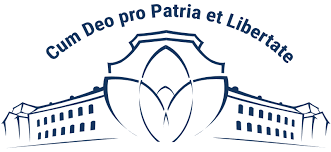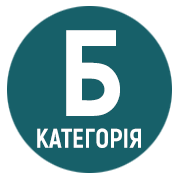CHANGES IN THE RELIGIOUS STRUCTURE OF THE POPULATION ON THE TERRITORY OF PRESENT TRANSCARPATHIA IN 1851–1941: MAIN REASONS AND TENDENCIES
DOI:
https://doi.org/10.32782/2786-5843/2023-1-6Keywords:
religious structure, Transcarpathia, Greek Catholics, Roman Catholics, Calvinists, Orthodox, historic county, historic districtAbstract
In the present study we attempted to determine the religious structure of the population that has lived on the territory that is now known as Transcarpathia between 1851 and 1941, based on the data from several sources: the book by Elek Fényes “Geographic Dictionary of Hungary” published in 1851, statistic brochure entitled “Data on Religions of the 1869 Census” reviewed and edited by László Sebők in 2005 as well as data from subsequent Hungarian censuses, issued by the Hungarian Central Statistical Office in 2000, edited by József Kepecs. According to the results of our research, we can state that throughout the last 170 years the prevalent religious community of the region was that of the Greek Catholics’, who have predominantly lived in the mountainous territories of Transcarpathia. Though, during the period of examination their proportion was constantly diminishing, substantially due to the so called Schismatic Peasant Movement which meant the return of the local Rusyn-Ukrainian population from Greek Catholicism to their original religion, Orthodoxy. Beside the Rusyn-Ukrainians, a minor part of Hungarians and Romanians of Transcarpathia have also identified and keep identifying themselves as Greek Catholics. An important role in the religious composition was also played by the representatives of Calvinism (the so called “Hungarian religion”, as the vast majority of its believers are ethnic Hungarians), Roman Catholicism, Judaism and Orthodoxy.
References
Molnár, J. & Molnár D. I. Kárpátalja népessége és magyarsága a népszámlálási és népmozgalmi adatok tükrében (The Population and Hungarian Community of Transcarpathia in the Mirror of Census and Population Change Data). PoliPrint Kiadó, Ungvár, 2005
Molnár, J. Vallási megoszlás (Religious Structure). In Baranyi, B. (ed.): Kárpátalja MTA Regionális Kutatások Központja, Dialóg Campus Kiadó, Pécs–Budapest, 2009, pp. 207–209.
Molnár D., I. Perifériáról perifériára: Kárpátalja népessége 1869-től napjainkig (From Periphery to Periphery: the Population of Transcarpathia from 1869 to Present). Kalligram, MTA Társadalomtudományi Kutatóközpont, Kisebbségkutató Intézet, Budapest, 2018.
Тиводар, М. Закарпаття: народознавчі роздуми (Transcarpathia: ethnographic meditations). Вид-во Карпати, Ужгород, 1995.
Kocsis, K. A. Kárpát-medence történeti vallásföldrajza (10–21. század) [The Historic Geography of Religions of the Carpathian Basin (10–21 Century)]. In Gál, A. et al.: A Kárpát-medence történeti vallásföldrajza. Tanulmánygyűjtemény, első kötet, Nyíregyháza–Szerencs, 2016, 9-90 pp.
М. Вегеш, Ч. Фединець. Закарпаття 1919–2009 років: історія, політика, культура. Інститут етнонаціональних досліджень Угорської академії наук, Будапешт / Науково-дослідний інститут політичної регіоналістики УжНУ, Ужгород, 2010
Tátrai, P., Molnár, J., Kovály, K., Erőss, Á. A kárpátaljai magyarok lélekszáma és a népesedésüket befolyásoló tényezők a SUMMA 2017 felmérés alapján (Numbers and Factors Affecting the Demography of the Hungarians of Transcarpathia Based on the SUMMA 2017 Survey). Kisebbségi szemle III. évfolyam, 3. szám, Kapitális Nyomdaipari Kft., Debrecen, 2018, 7-34 рр.
І. Костащук. Релігійний простір України: суспільно-географічне дослідження. Монографія. Технодрук, Чернівці, 2018
Fényes, E. Magyarország geographiai szótára, mellyben minden város, falu és puszta, betűrendben körülményesen leíratik (Geographic Dictionary of Hungary in Which Every Town, Village and Heath Is Being Carefully Described in Alphabetical Order). Nyomatott Kozma Vazulnál, Pesten, 1851.
Sebők, L. Az 1869. évi népszámlálás vallási adatai (Data on Religions of the 1869 Census). TLA Teleki László Intézet, Budapest, 2005.
Kepecs, J. Kárpátalja településeinek vallási adatai (1880–1941) [(Data on Religions of the Settlements of Transcarpathia (1880–1941)]. Központi Statisztikai Hivatal, Budapest, 2000.
Sebestény, Zs. Kárpátalja helységnevei (Settlement Names of Transcarpathia). Pro Print Kft., Nyíregyháza–Csíkszereda, 2020
Gönczi Andrea. Ruszin skizmatikus mozgalom a XX. század elején (Rusyn Schismatic Movement in the Beginning of the 20th Century). PoliPrint Kiadó, Ungvár, 2008






